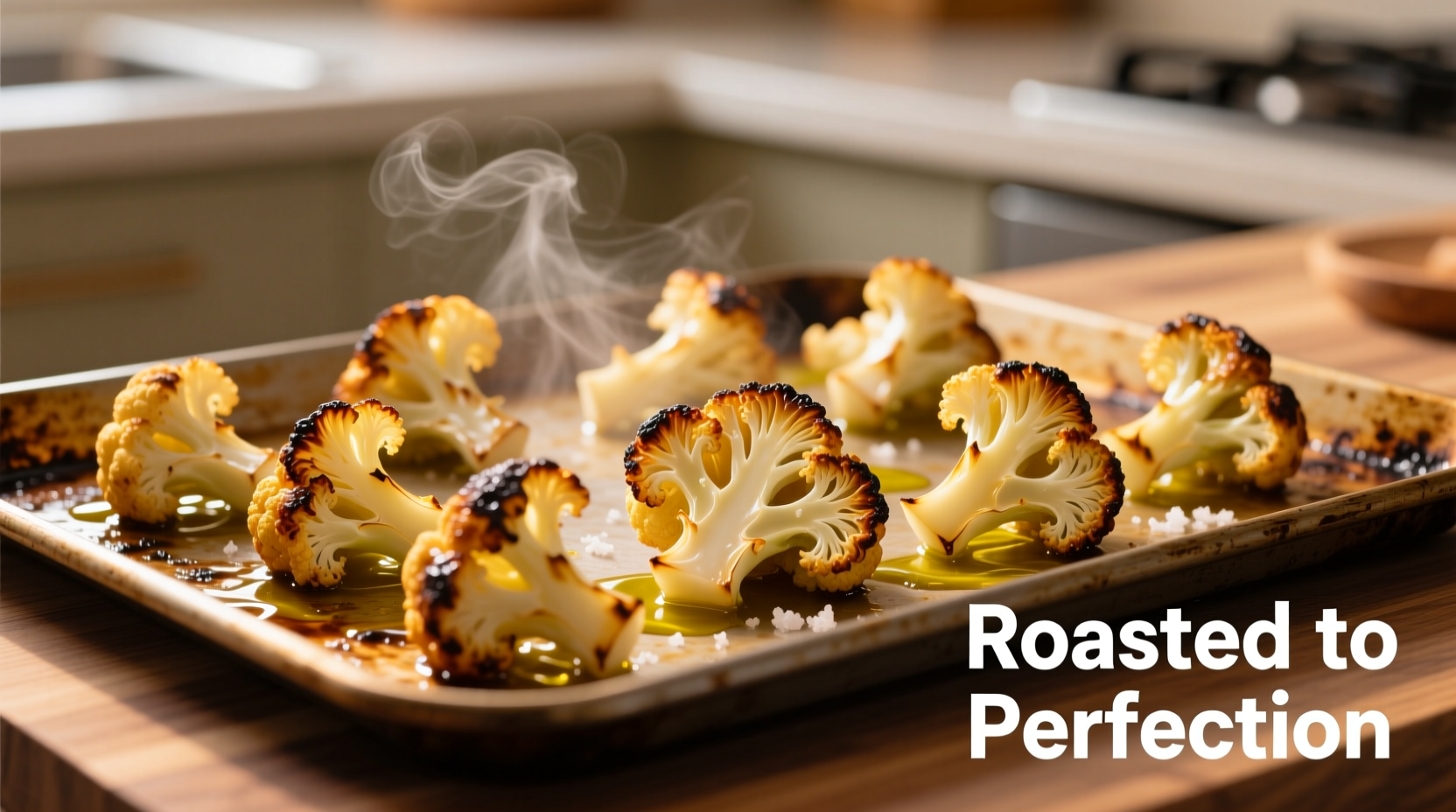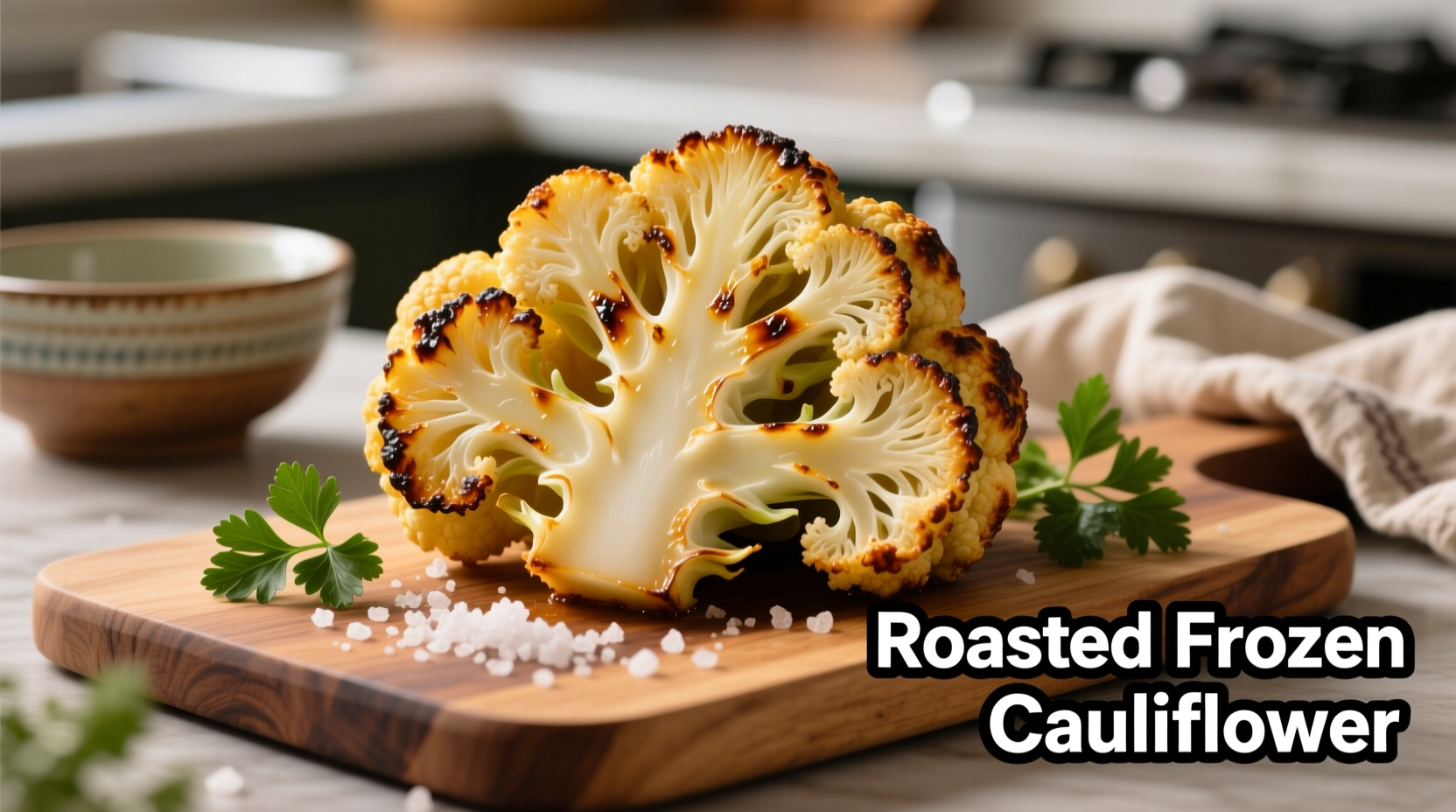You can roast frozen cauliflower directly from the freezer to achieve crispy, golden-brown results without thawing. The key is using high heat (425-450°F), proper oil distribution, and avoiding overcrowding the pan for optimal caramelization in 20-25 minutes.
Roasting frozen cauliflower has become a game-changer for busy home cooks seeking nutritious, restaurant-quality sides with minimal prep time. Forget soggy microwave meals or watery steamed versions – this method delivers crispy edges and tender-crisp texture that makes frozen vegetables taste anything but ordinary. Professional chefs like those at America's Test Kitchen have confirmed that skipping the thawing step actually improves texture by preventing excess moisture release during cooking.
Why Roasting Frozen Cauliflower Works Better Than You Think
Contrary to common belief, frozen cauliflower often produces superior roasted results compared to fresh in home kitchens. The flash-freezing process locks in moisture content, creating steam pockets that help the florets cook through while the exterior crisps. According to USDA Food Safety guidelines, properly frozen vegetables maintain nutritional value comparable to fresh, making this method both convenient and healthy.
The Science Behind Perfect Frozen Vegetable Roasting
When frozen cauliflower hits hot oil, the surface moisture instantly vaporizes, creating a protective barrier that prevents sogginess. This Maillard reaction – the same chemical process that gives seared steak its flavor – occurs more effectively because the frozen surface maintains lower internal temperature longer, allowing exterior browning before the inside overcooks. Food science research from Cook's Illustrated shows frozen vegetables roast more evenly because their consistent temperature prevents the "thermal shock" that can happen with room-temperature produce hitting extreme heat.
Your Step-by-Step Roasting Guide
Preparation Essentials
Grab these items before starting:
- Baking sheet with rim (dark metal works best for browning)
- Parchment paper or silicone mat (prevents sticking without excess oil)
- High smoke-point oil (avocado or refined olive oil)
- Small bowl for tossing (metal or glass)
Proper Seasoning Technique
Seasoning frozen vegetables requires a different approach than fresh:
- Place frozen cauliflower in dry bowl (no thawing)
- Add 1½ tablespoons oil per pound of cauliflower
- Toss vigorously for 60 seconds – the ice crystals help distribute oil
- Add seasonings (salt works best after oil to prevent clumping)
- For spice rubs, mix with 1 teaspoon cornstarch to prevent burning
Temperature and Timing Guide
| Temperature | Time | Result | Best For |
|---|---|---|---|
| 400°F | 25-30 min | Even cooking, moderate browning | Meal prep, softer texture |
| 425°F | 20-25 min | Optimal crisp-tender balance | Most home ovens, standard method |
| 450°F | 18-22 min | Maximum caramelization, crisp edges | Convection ovens, professional results |
Flip halfway through cooking using a thin metal spatula – avoid disturbing the developing crust. For extra crispiness, finish under the broiler for 1-2 minutes watching closely to prevent burning.
Avoid These Common Mistakes
Even experienced cooks make these critical errors when roasting frozen cauliflower:
- Overcrowding the pan: Creates steam instead of roast – use two pans if needed
- Using low smoke-point oils: Extra virgin olive oil burns at high temps – choose refined options
- Adding wet ingredients too early: Lemon juice or vinegar should go on in the last 5 minutes
- Skipping the preheat: Cold pans cause steaming – always preheat your baking sheet
When Fresh Beats Frozen
While frozen cauliflower works remarkably well for roasting, certain situations call for fresh:
- When making cauliflower steaks (frozen florets lack structural integrity)
- For raw applications like cauliflower rice salads
- When precise moisture control is critical (soups, purees)
- During peak cauliflower season (winter months in most climates)
The University of California Davis Postharvest Technology Center confirms that frozen vegetables maintain quality for 8-12 months when stored properly at 0°F, making them a reliable year-round option.

Culinary Applications Beyond Basic Sides
Elevate your roasted frozen cauliflower with these chef-inspired techniques:
- Taco nights: Toss with smoked paprika and lime after roasting
- Pasta additions: Roast with garlic for creamy cauliflower pasta
- Grain bowls: Top with tahini and toasted seeds for protein-packed meals
- Soups: Blend roasted florets with broth for velvety texture without cream
Frequently Asked Questions
Can I roast other frozen vegetables using this method?
Yes, this technique works exceptionally well for broccoli, Brussels sprouts, and carrots. Adjust cooking times based on vegetable density – denser vegetables like carrots may need 5 extra minutes, while delicate vegetables like asparagus work best at 400°F for 15-18 minutes.
Why does my roasted frozen cauliflower turn out soggy?
Sogginess typically occurs from overcrowded pans or insufficient oven temperature. Ensure your oven is fully preheated to at least 425°F and spread florets in a single layer with space between pieces. Using too much oil or adding wet ingredients too early also causes steaming instead of roasting.
Do I need to thaw frozen cauliflower before roasting?
No, thawing actually worsens results by releasing excess moisture that prevents proper browning. The flash-freezing process preserves cell structure, allowing frozen cauliflower to roast more evenly than thawed. Simply toss frozen florets directly with oil and seasonings before spreading on the baking sheet.
How can I add flavor without adding calories?
Boost flavor with zero-calorie options like citrus zest, vinegar spritzes, or herb-infused oils. Toss roasted cauliflower with lemon or apple cider vinegar in the last 5 minutes of cooking, or sprinkle with nutritional yeast for cheesy flavor. Dried herbs work better than fresh for high-heat roasting as they won't burn.











 浙公网安备
33010002000092号
浙公网安备
33010002000092号 浙B2-20120091-4
浙B2-20120091-4